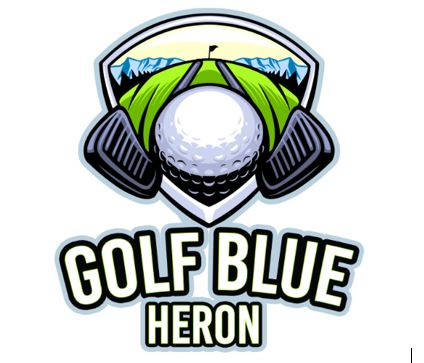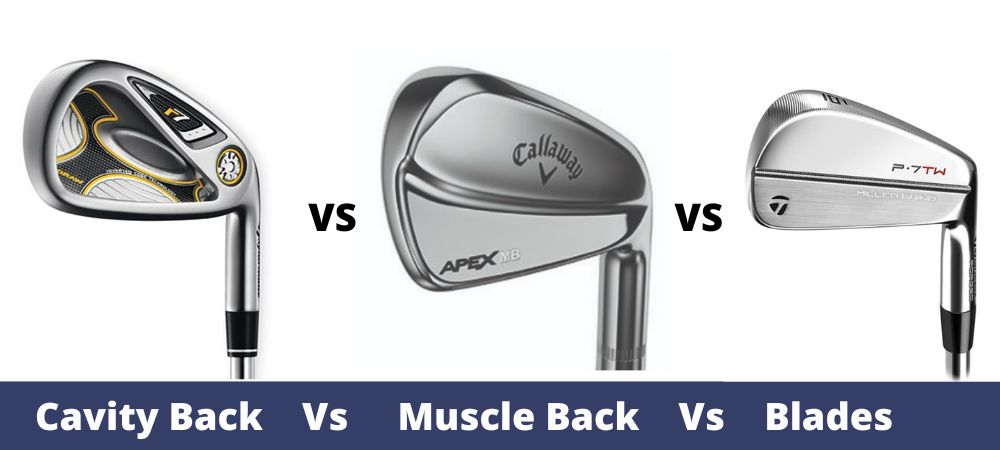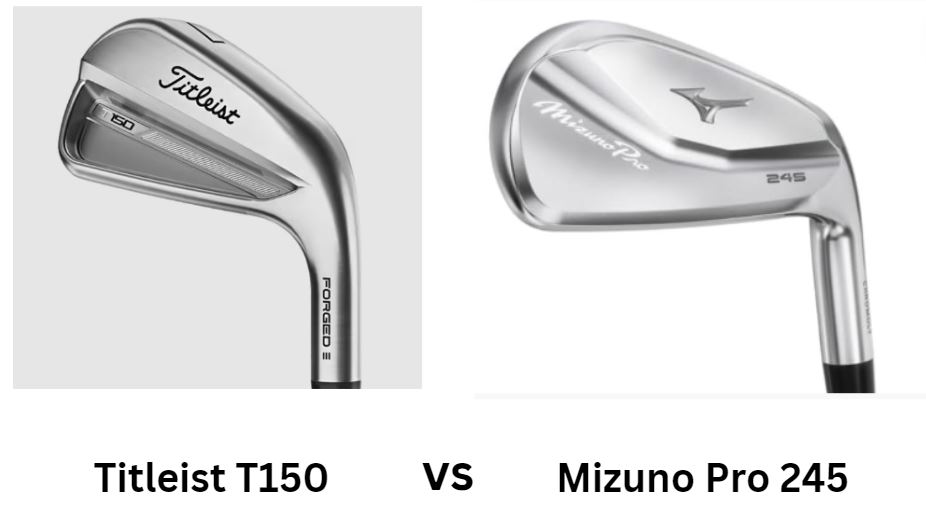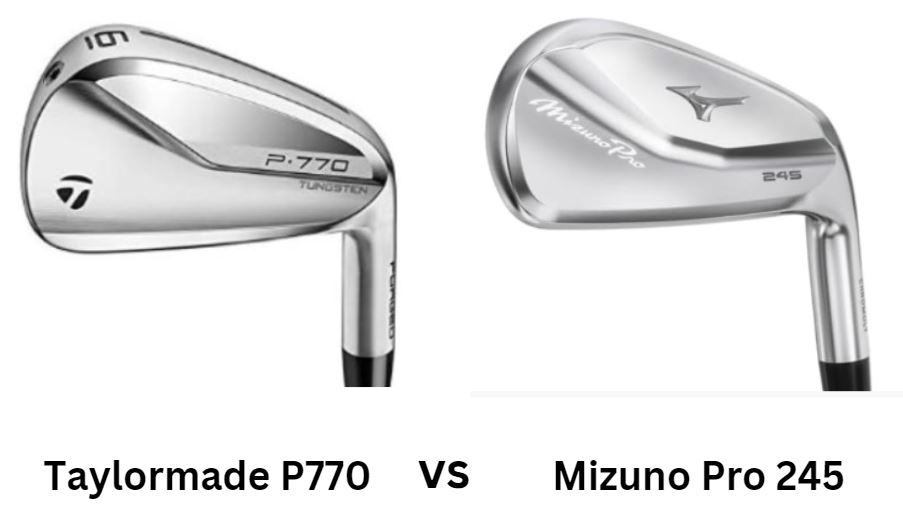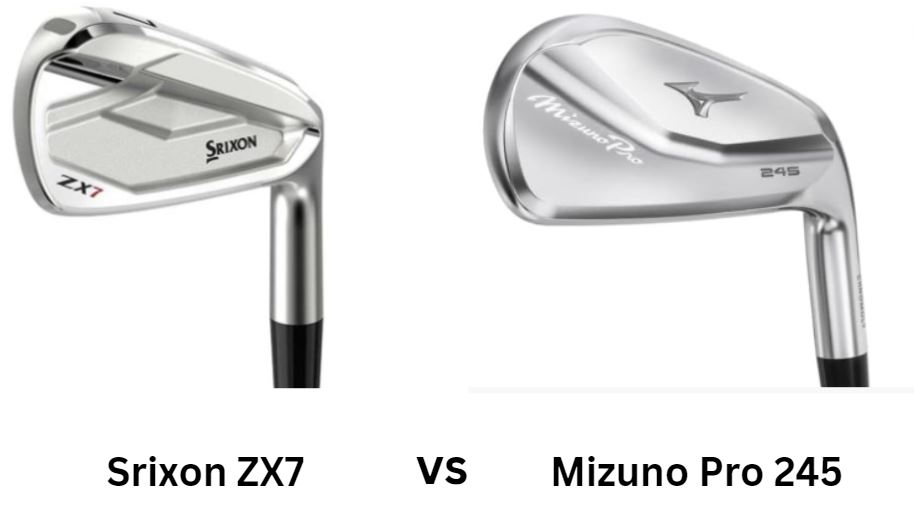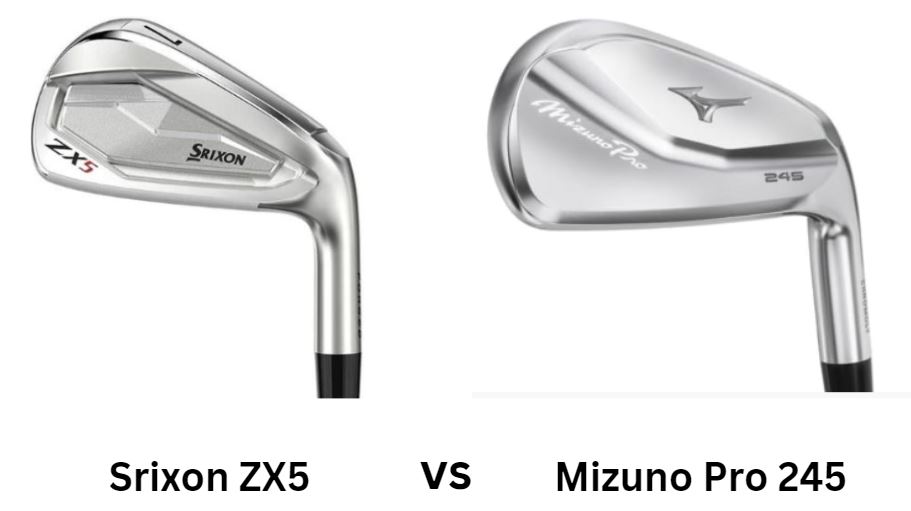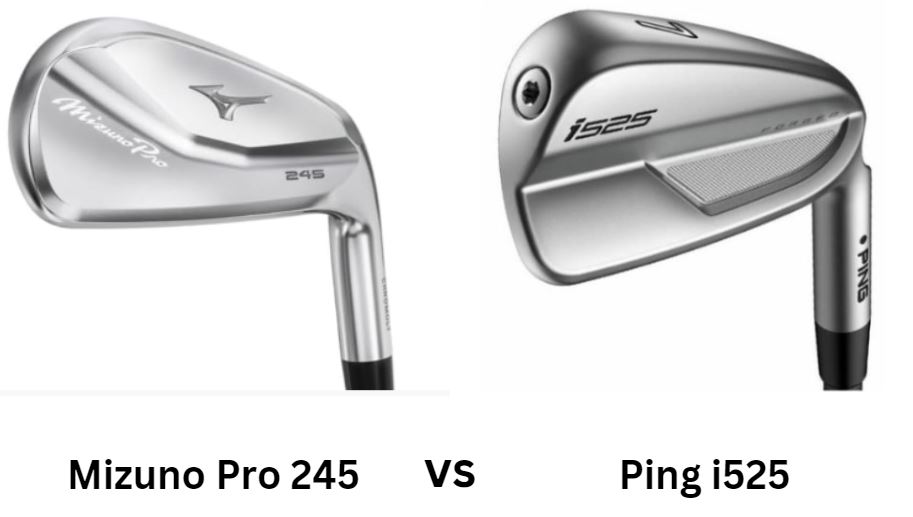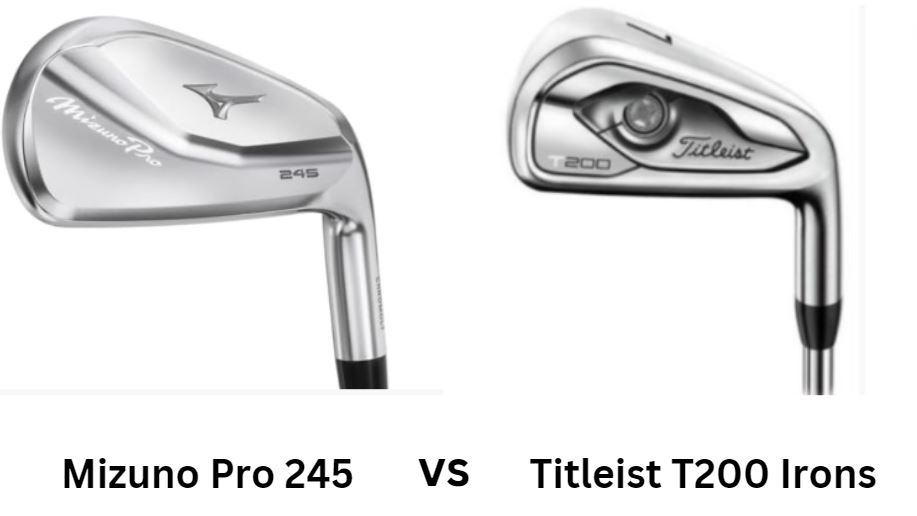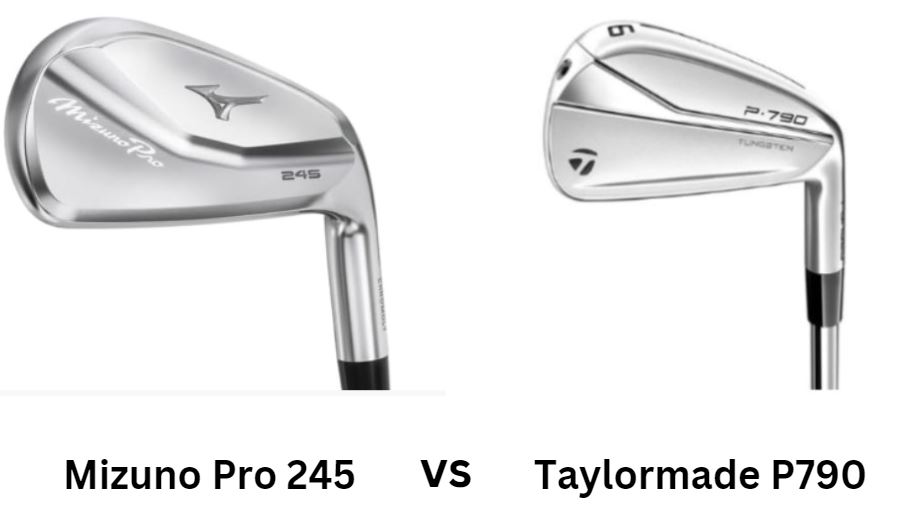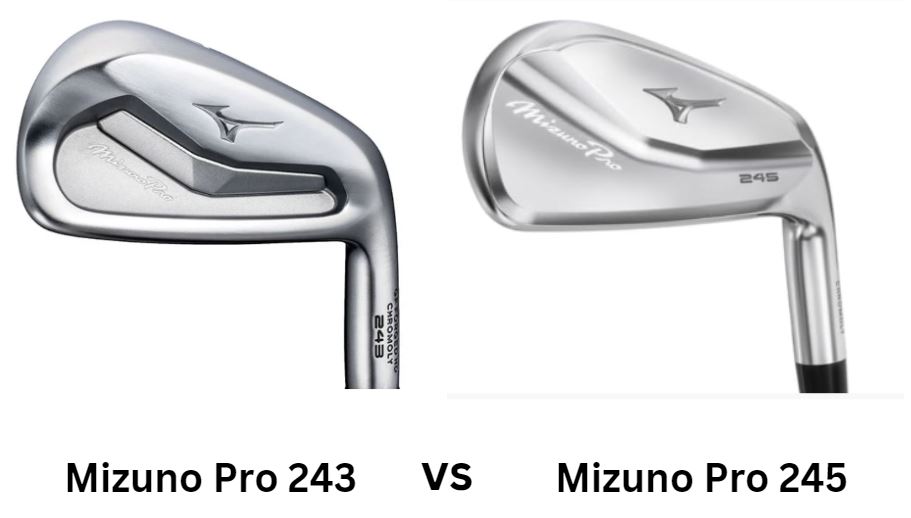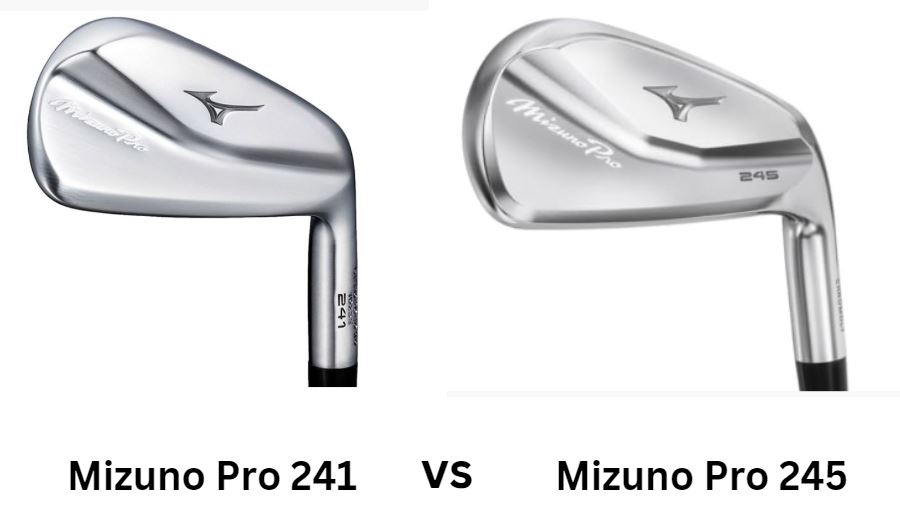Cavity Back Vs Muscle Back Irons Vs Blades – What’s Best And For Who?
We’re all looking for the perfect golf club, the one which will help us shoot our lowest ever score and have an amazing round of golf.
However, with so many different types of iron on the market which one do we choose. In this article we list and describe the three main types of golf irons. Cavity back, Muscle Back and Blades.
We will explain how they differ, who they are best suited to, and our top recommendations.
To start though, lets describe what they actually are. Cavity back irons have a larger sweet spot and are more forgiving than muscle back or blade irons.
They’re also easier to hit, making them a great choice for beginners or high handicappers. However, they lack the precision and control of muscle back or blade irons.
Muscle back irons have a smaller sweet spot but offer more control and accuracy. They’re also more difficult to hit, making them better suited for experienced players with a low handicap.
Blade irons are the most difficult to hit but offer the most precision and control. They’re typically used by professional players with a very low handicap.
Each of these three main types of golf clubs – cavity back, muscle back, and blades have its own benefits and drawbacks. Each category of iron caters for a particular type of golfer.
Cavity back irons are used by high handicappers, muscle backs are used by low handicappers, and blades are used by highly skilled players.
Are Muscle Backs And Blades The Same Thing?
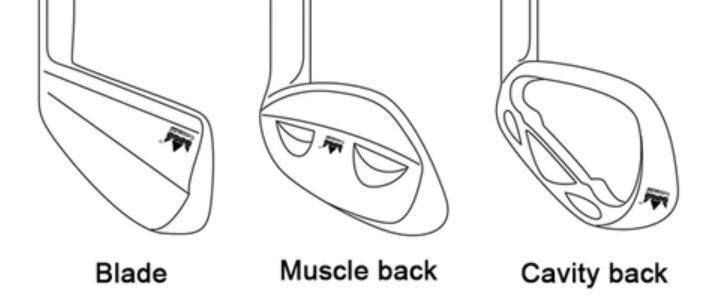
Muscle back irons and blades are not the same thing. A blade iron is a lot like a muscle back in that it has a small club face and a narrow sole.
The big difference is that the weight of the blade iron is distributed evenly throughout the club, while the weight of the muscle back iron is concentrated in the back of the club.
The clubhead of the blades is thinner throughout whereas muscle backs are thicker at the bottom. This makes the muscle back iron more forgiving on mis-hits, but also makes it harder to work the ball.
What Are Cavity Back Irons?
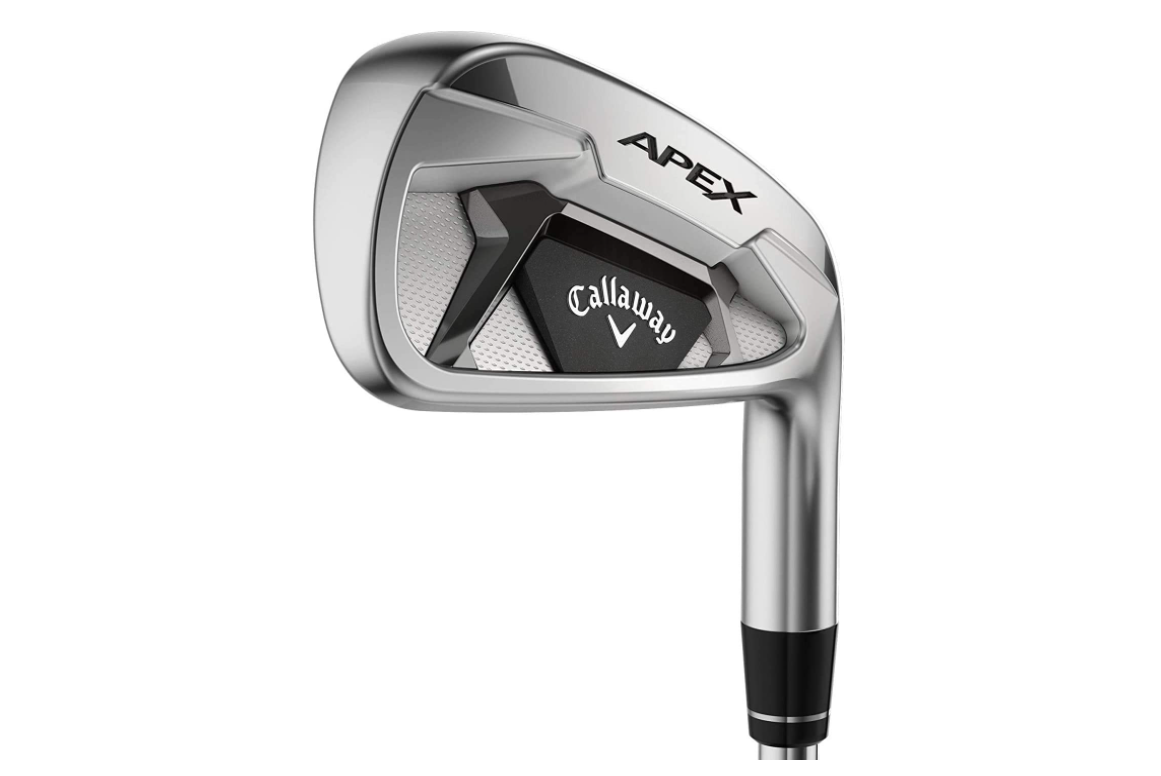
Cavity back irons are designed for more forgiveness on mis-hits and off-center hits.
The weight of the iron is distributed around the perimeter of the club head, which gives these clubs a higher moment of inertia (MOI).
This means the club is less likely to twist on impact, resulting in straighter shots.
Cavity back irons also have a lower center of gravity (CG), making it easier to get the ball in the air.
Players with a higher handicap will benefit from the forgiveness that these clubs offer. Higher-handicap golfers may also find it easier to control their shots with cavity back irons.
Pros
- Cavity back irons typically have wider soles, which can make them easier to hit.
- They also tend to have more forgiving sweet spots, meaning that even if you don’t hit the ball perfectly in the center of the clubface, you’ll still get decent results.
Cons
- Cavity back irons can sometimes feel less precise
- They may not offer as much feedback on mis-hits.
Cavity Back Irons: Who Should Use Them?
Generally, high handicappers use cavity back irons.
If you’re looking for an iron that offers more forgiveness and a higher launch angle, then cavity back irons could be the right choice for you.
However, it’s important to remember that they can also be more difficult to control, so make sure you try them out before you commit to a set.
What Are Muscle back Irons?
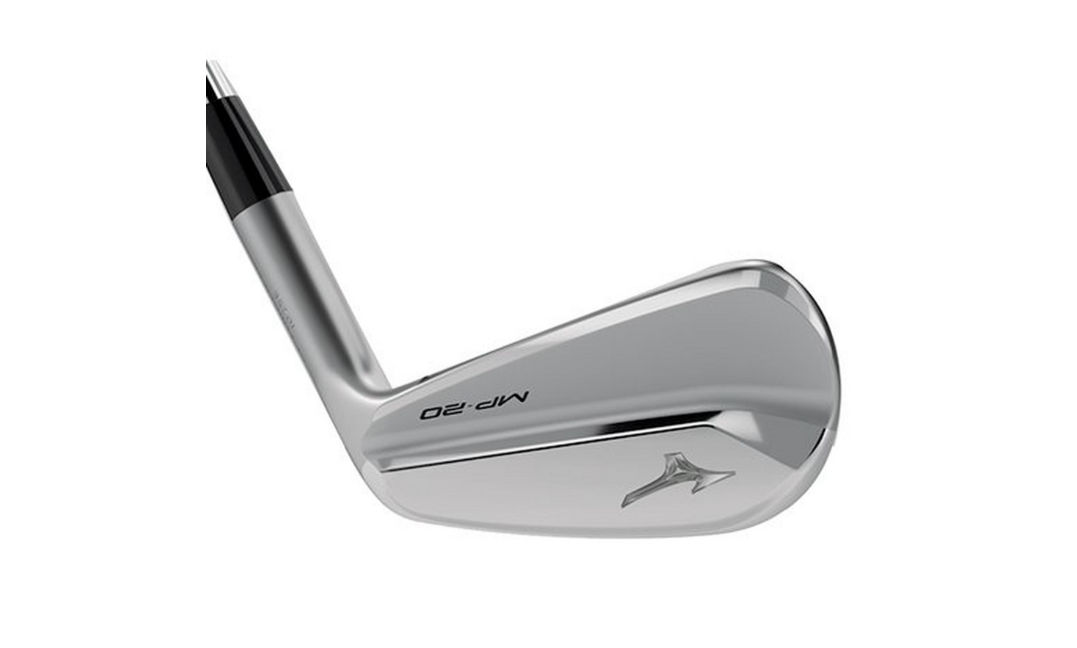
Muscle back irons have a smaller clubhead with less weight in the rear, although there is added weight at the bottom.
This design provides more control and accuracy for experienced golfers. Muscle back iron can be more difficult to hit than a cavity back iron, but they offer a higher level of precision.
Pros
- Muscle back irons can offer more control and precision.
- If you frequently play on tight, tree-lined courses where accuracy is at a premium, muscle back irons can give you the added control you need to keep your shots on the fairway.
Cons
- Muscle back irons tend to be more expensive than cavity back irons.
Muscle Back Irons: Who Should Use Them?
If you’re an experienced golfer with a low handicap, muscle back irons could give you the control and accuracy you need to take your game to the next level.
What Are Blades Irons?
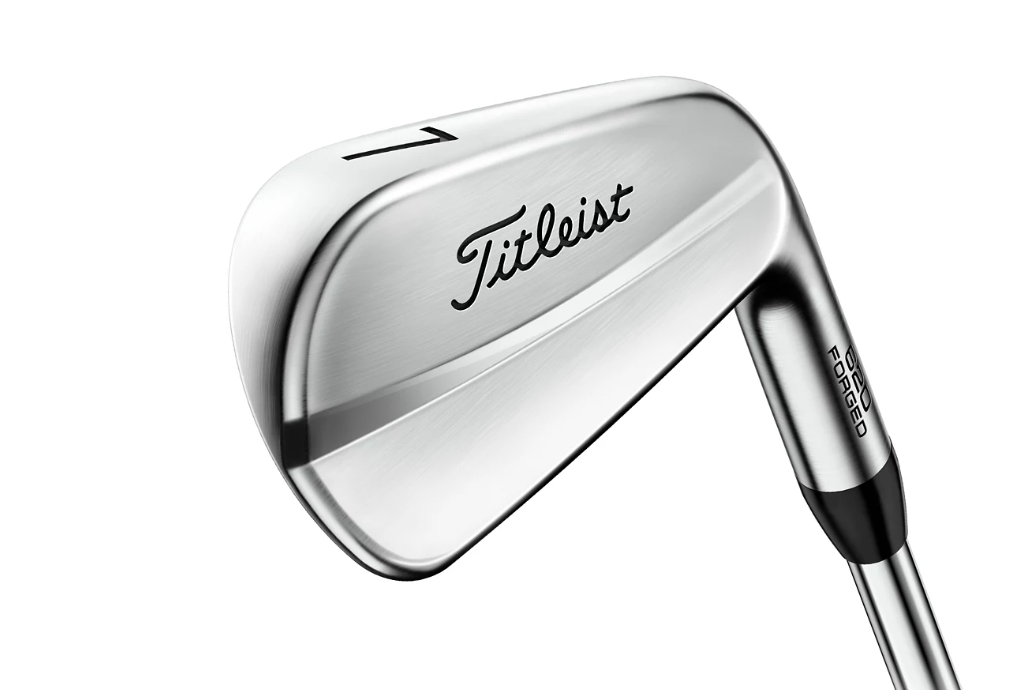
Blade irons are a type of iron golf club that have a smaller, thinner head than a cavity back or muscle-back irons.
They are designed for more control and accuracy and are often used by low-handicap or professional golfers.
Pros
- Blade irons offer more control and accuracy.
- They are often more aesthetically pleasing than cavity back irons.
- Blade irons can help create a penetrating ball flight.
Cons
- Blade irons can be difficult to hit consistently.
- They often lack the forgiveness of a cavity back iron.
Blade Irons: Who Should Use Them?
Blade irons are designed for highly skilled players who are professionals. The usability of blades is high; therefore, it does not allow any room for mis-hits.
Cavity Backs Vs Muscle Backs
-
Distance
Cavity-back irons tend to produce more distance than muscle-back irons.
-
Forgiveness
Cavity-back irons tend to be more forgiving than muscle-back irons making them a good choice for beginner and intermediate golfers.
-
Workability
Although muscle-back irons are more accurate, they can be less forgiving than cavity-back irons.
-
Price
Muscle-back irons are more expensive than cavity-back irons.
Cavity Backs Vs Blades
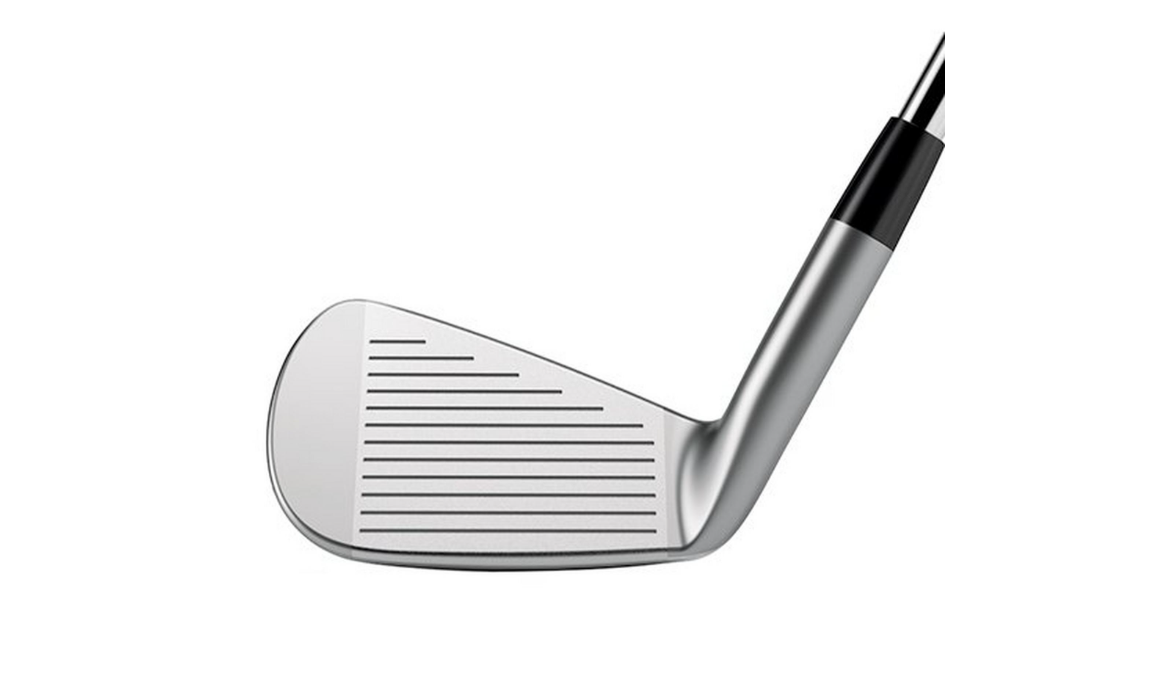
-
Distance
If hit properly, cavity-back irons irons produce more distance than blades.
-
Forgiveness
Cavity-back irons have larger sweet spots. They are more forgiving than blade irons.
-
Workability
If hit properly, a golfer can better shape the ball with a blade iron than with a cavity-back iron.
-
Price
Blade irons are more expensive than cavity-back irons.
Muscle Backs Vs Blades
-
Distance
Muscle-back irons have added weight at the bottom of the club head, this allows them to produce a bit more distance than blade irons.
-
Forgiveness
Muscle-back irons offer more forgiveness than blade irons.
-
Workability
The thicker section on the bottom of the club head of muscle-back irons allows it to offer more workability than a traditional blade iron.
-
Price
Because of the technology used in the muscle back irons over blade irons, muscle-back irons are more expensive than blades.
Are All Cavity Backs Game Improvement?
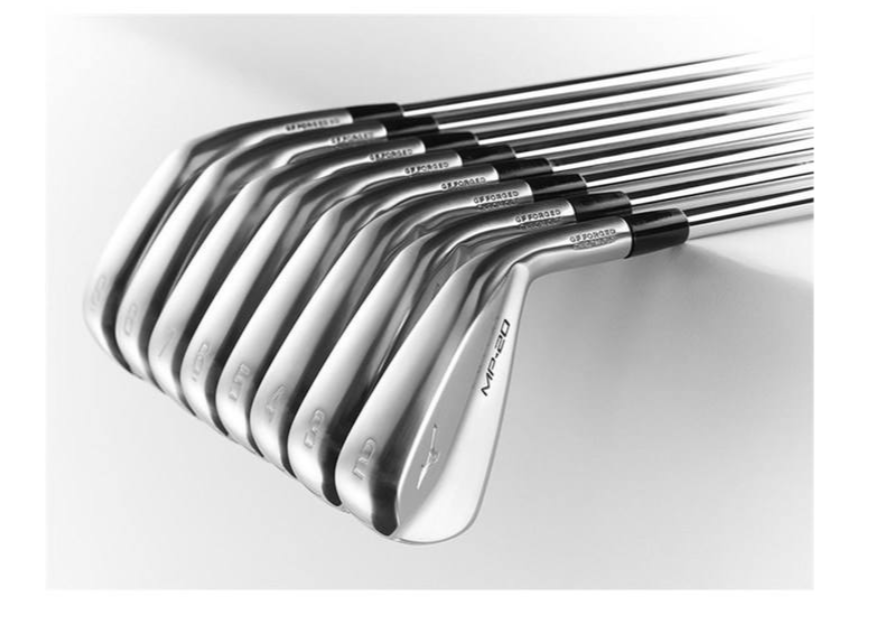
Almost all cavity-back irons are game improvement irons.
While cavity back irons tend to be more forgiving, game improvement clubs are designed for beginners or high handicappers who need help with their accuracy and distance control.
In this article by Lincoln City Golf it is also confirmed that cavity back irons are better for newer golfers.
Are Players Distance Irons Cavity Backs As Well?
Players’ Distance irons are mostly cavity backs.
Players’ Distance irons are produced for mid handicappers who want an extra bit of distance from their shots while maintaining a decent level of forgiveness.
Are All Blades Forged?
Not all blades are forged. Some are cast, which means they’re made from molten metal that’s poured into a mold.
The advantage of casting is that it allows manufacturers to create irons with very elaborate designs.
The disadvantage is that it’s difficult to control the quality of the finished product, so there can be more inconsistencies in a cast iron than in a forged iron.
Are All Blades, Muscle Backs?
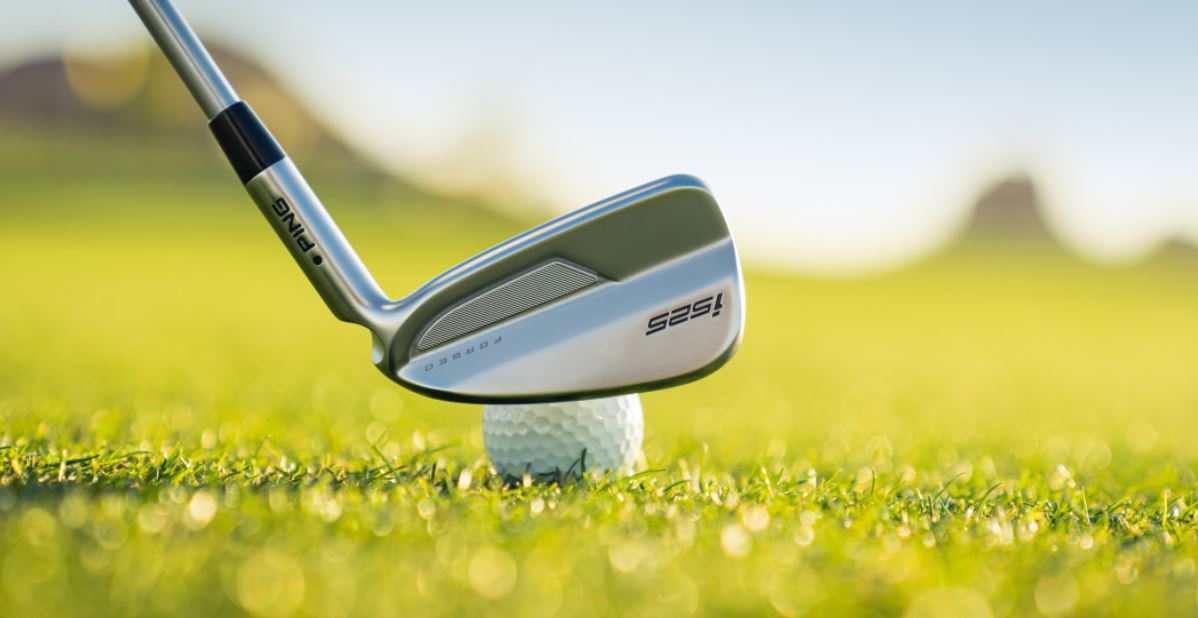
Blade irons are very similar to muscle-back irons, but with even less weight distributed around the perimeter of the club head.
Blade irons have an extremely small sweet spot, making them incredibly difficult to hit consistently.
Blade irons are only recommended for highly skilled players with a very low handicap.
What Are The Different Types Of Blades?
Blade irons are the most traditional type of iron, and they offer the most control and accuracy but are also the least forgiving.
Blades can be cast irons or forged irons. Forged irons are more expensive than cast irons.
Can High Handicappers Use Musclebacks And Blades?
While cavity back irons can be helpful for some high handicappers, muscle back and blade irons can also be beneficial. Ultimately, it’s a personal choice.
Muscle-back and blade irons can help high handicappers improve their accuracy and shot-making ability.
These types of irons can also provide more feedback than cavity back irons, which can be helpful for players who are trying to make swing changes.
If you’re a high handicapper who is struggling with your game, it might be worth giving muscle-back or blade irons a try.
You may be surprised at how much better you can play with these types of clubs.
Why Do Some Hit Blades Better?
Many golfers swear by blade irons, and there are some very good reasons why they prefer them over cavity back irons.
Blade irons tend to have a smaller sweet spot, but they offer more control and precision for experienced golfers.
They also provide a more solid feel at impact, and the ability to shape shots better which some golfers prefer.
One of the main reasons why some golfers hit blades better is because they have more control over their shots.
With a cavity back iron, the weight is distributed more evenly throughout the club head, which can make it difficult to control your shots.
With a blade iron, the weight is concentrated in the head, which gives you more control over your shots.
Can Low Handicappers Use Cavity Backs?
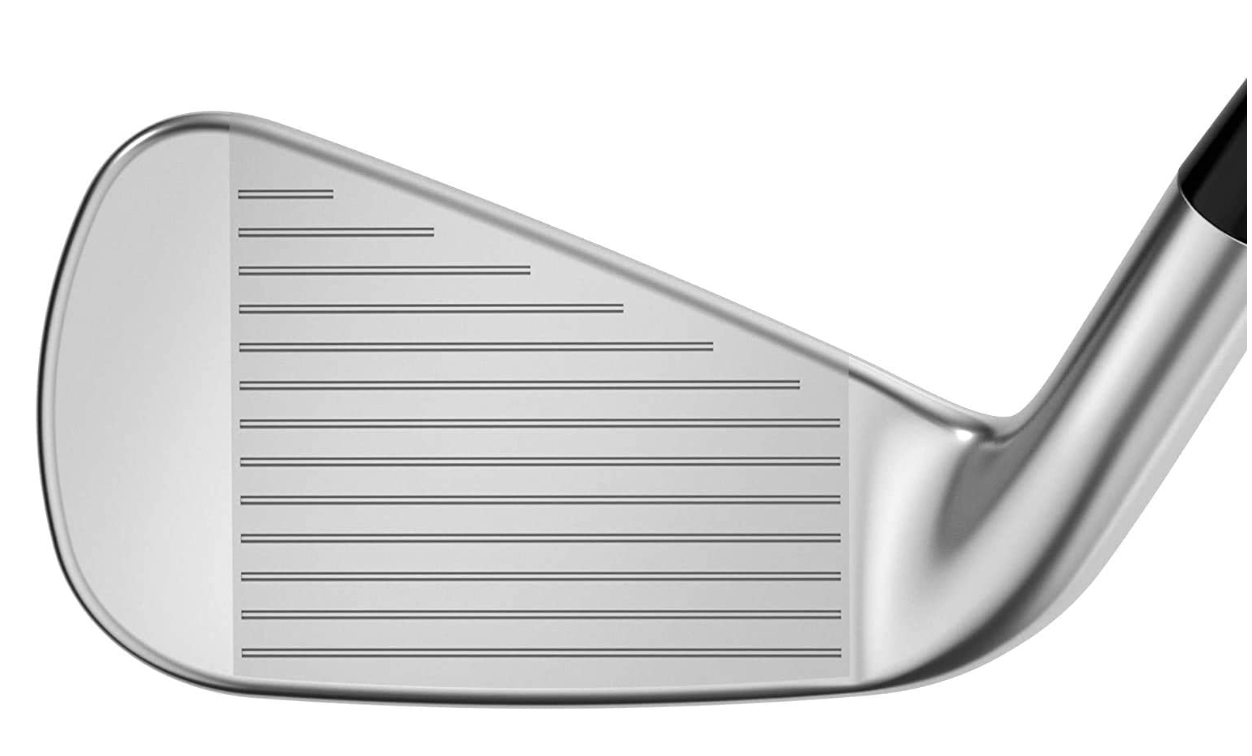
Some golfers might think that only high handicappers should use cavity back irons because they are easier to hit.
However, low handicappers can also benefit from using cavity back irons. Cavity back irons can help low handicappers to achieve more consistent shots and more forgiving shots.
In addition, cavity back irons can help low handicappers to increase their ball speed and launch angle. So, if you are a low handicapper and you are looking for a new set of irons, don’t discount the cavity back option.
When To Switch From Cavity Backs To Muscle Backs?
If you’re new to the game, or if you’re still working on developing your swing, cavity back irons are a good option.
They’re more forgiving than muscle backs or blades, meaning that they’re less likely to produce a wayward shot if you don’t hit the ball perfectly in the center of the clubface.
In this article at The Sandtrap it is discussed how hard it can be to hit muscle back well after playing cavity backs for some time, it takes a lot of practice to switch.
Once you’ve developed a consistent swing and you’re able to consistently hit the ball in the center of the clubface, you may be ready to switch to muscle back irons.
Muscle backs offer less forgiveness than cavity backs, but they provide more control and allow for more shot shaping.
In this excellent YouTube video from Rick Shiels they have a mid-handicap golfer test out hitting blades and cavity back clubs whilst providing his feedback:
Switching From Muscle Backs To Blades
Here are a few things to consider that will help you make the decision of when to switch from muscle backs to blades:
- Are you consistently hitting the ball in the sweet spot? If not, switching to blades may help you improve your accuracy.
- Do you have a good feel for your shots? Muscle back irons can sometimes lack feel, making it difficult to know if you are hitting the ball well or not. Blades offer more feedback, so you can tell if you are making solid contact.
- Are you ready to commit to practice? Blades require more precision and practice to master than muscle backs. If you are not willing to put in the extra time at the range, then blades may not be for you.
- What type of player are you? If you are a high handicapper or beginner, muscle backs may be a better choice as they are easier to hit than blades
Signs You Need To Switch To Cavity Backs?
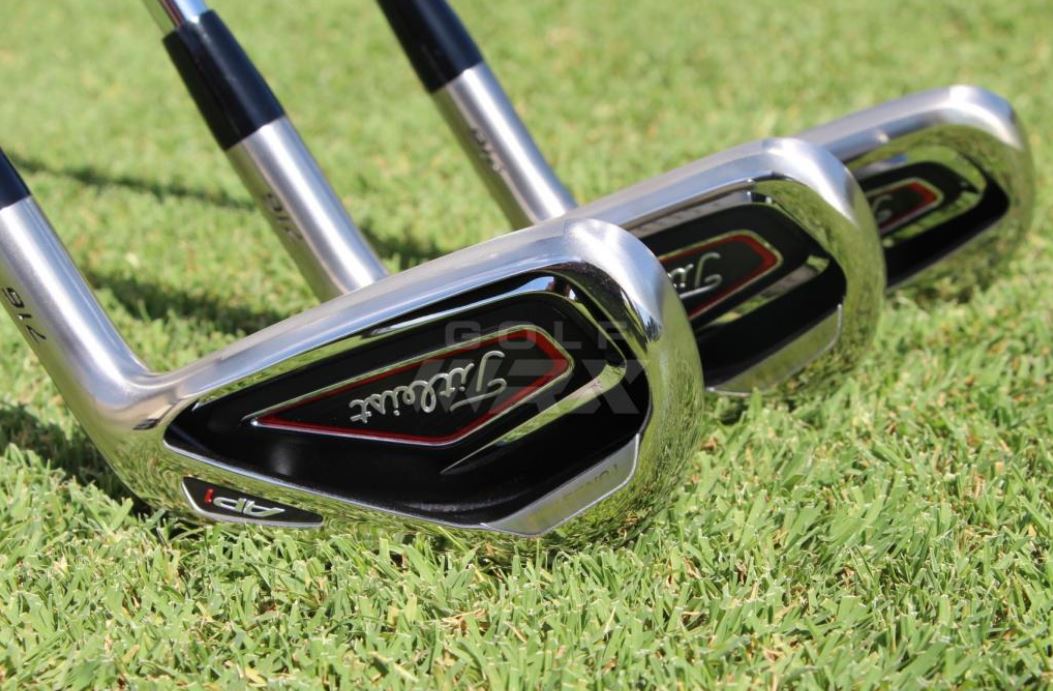
You’ve been playing with your trusty old blades for years, and they’ve served you well.
But lately, you’ve been noticing that your shots aren’t as accurate as they used to be. Could it be time to switch to a cavity back iron?
There are a few things that can indicate it’s time for a change:
- Your ball-striking has become inconsistent.
- You’re losing distance.
- You’re struggling with accuracy.
If you’re experiencing any of these issues, it might be time to switch to cavity back irons. They can offer more consistency, distance, and accuracy – all things that can positively impact your golf score.
Our Favorite Cavity Back Irons
Callaway Apex 21 Irons
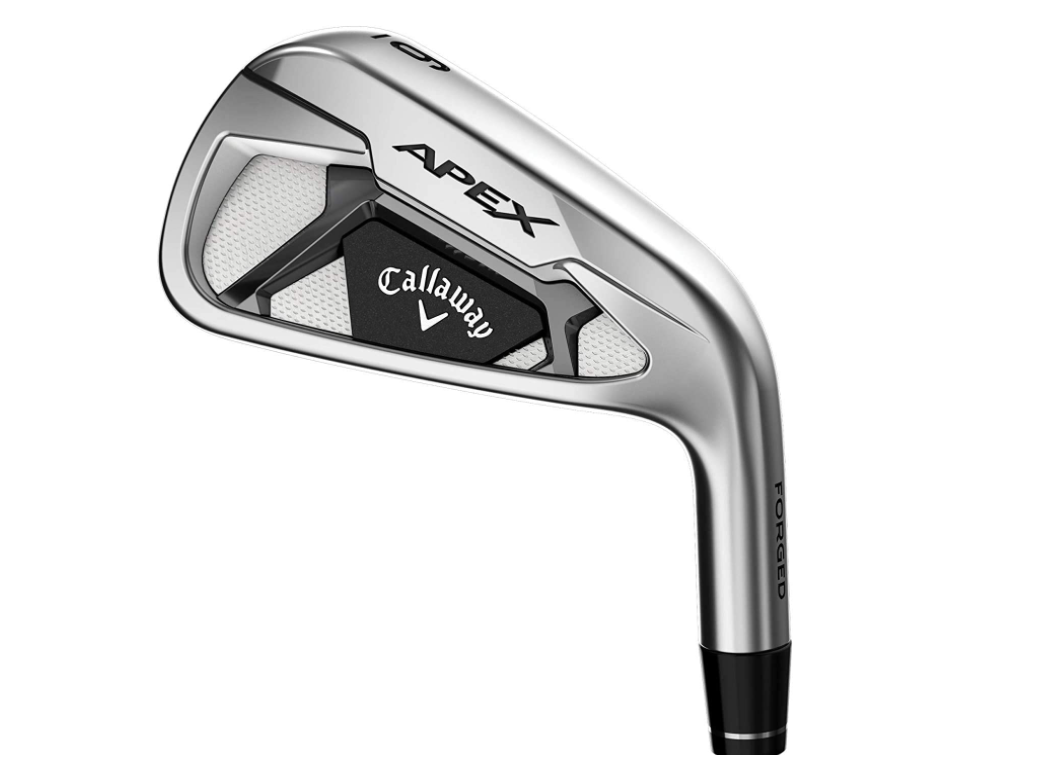
Callaway Apex 21 irons have the latest engineered technology which produces a good launch speed and consistent spin.
It has a superior impact feel.
Pros
- High spin rate
- Forgiving
- Good ball speed
Cons
- A bit pricey
Overall Score: 96/100
Check Out More Reviews Here:
Our Favorite Muscle Back Irons
Mizuno MP-20 Golf Iron Set
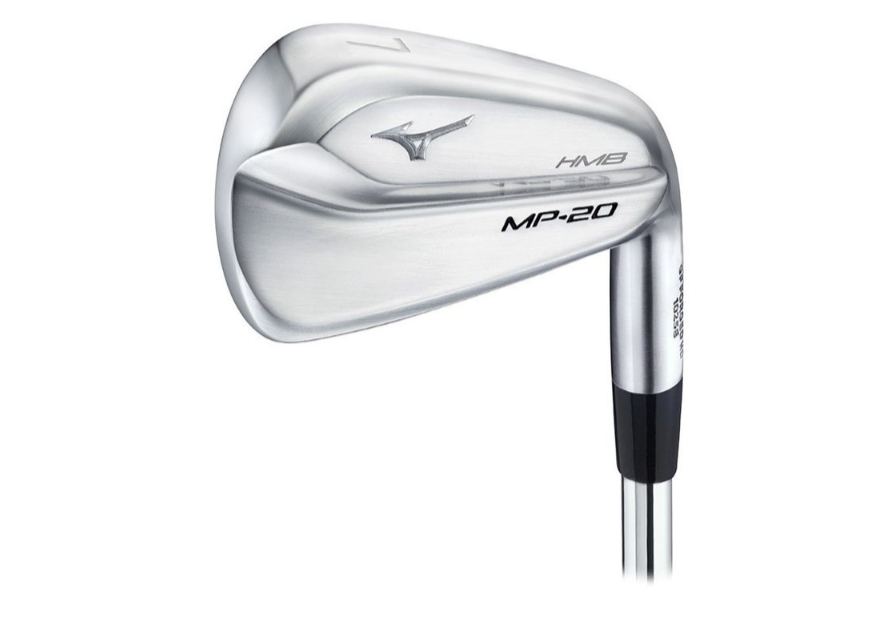
Mizuno MP-20 has made it to our article because of its utility-rich features of a muscle-back.
This iron has a higher launch speed and better ball trajectory. It offers optimal accuracy.
Pro
- High moment of inertia
- Forgiving
- Adequate Distance
- Optimal Spin
Cons
- Shot consistency might be a problem
- A bit expensive
Overall Score: 94/100
Check Out More Reviews Here:
![]()
Our Favorite Players Distance Irons
TaylorMade P770

The TaylorMade P770 iron is one of the top-rated Players Distance iron of 2022.
They have a stylish design and utility-rich features.
Pros
- Thin topline
- Adequate forgiveness
- High spin rate
- Good feel at impact
Cons
- High handicappers will struggle with their small clubhead
Overall Score: 97/100
Check Out More Reviews Here:
Our Favorite Blade Irons
Titleist 620 MB Irons
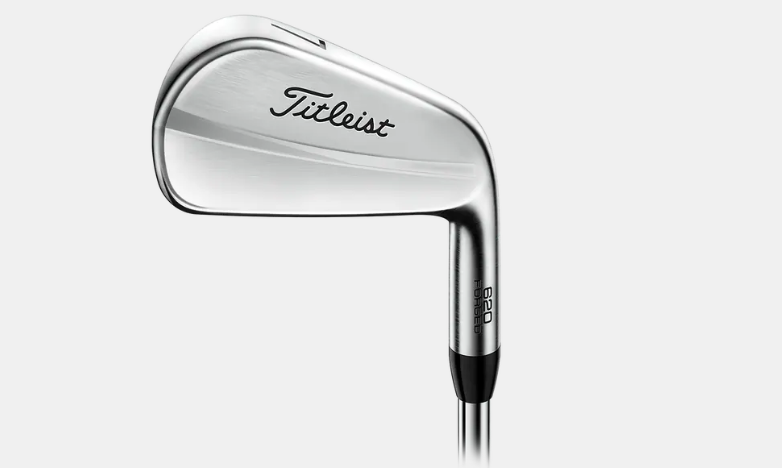
These blade irons have a superior feeling at impact.
Their design is modern. These blades are an ideal option for shaping the shots. These offer good feedback. Trusted by many professionals.
Pros
- Superior feel at impact
- Impressive shot-shaping
- Optimal accuracy and distance
Cons
- Not forgiving at all
Overall Score: 95/100
Check Out More Reviews Here:
Conclusion
We hope you’ve enjoyed reading this article about muscle back irons, cavity back irons and blade.
After reading which type of iron is best for you, have you decided? Our advice would be that it depends on your skill level and what you’re looking for in a golf club.
If you’re just starting out, a cavity back iron will be the best choice. If you’re an experienced golfer looking for more control, a muscle back iron will be a better option.
And if you’re a skilled golfer who wants the most precision, an to take your game to the next level then a blade iron is the way to go.
If you are interested in improving your game even further then why not check out our other article on cast irons vs forged irons.
